
Blog
How to Measure for Lederhosen? Get the Right Fit Every Time
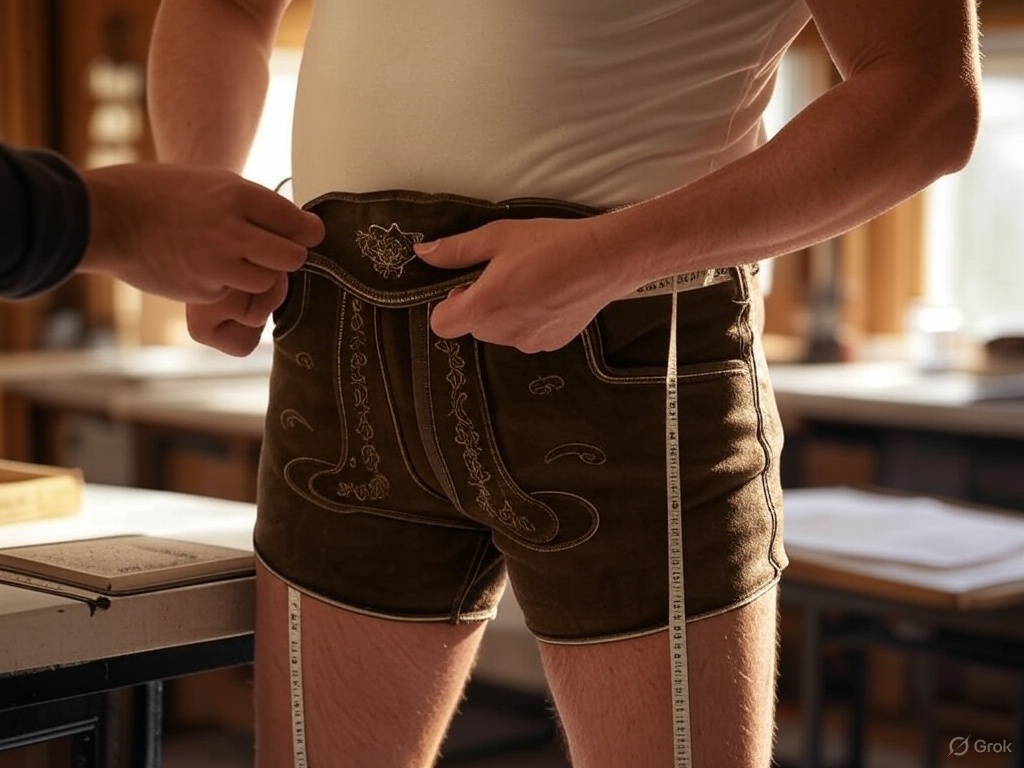
How to Measure for Lederhosen?
Wondering how to measure for Lederhosen and get the perfect fit? You’re in the right place. This guide breaks down each step, from waist to inseam, so you can size with confidence and avoid costly mistakes. Whether you prefer traditional or modern styles, getting accurate measurements ensures your Lederhosen feel custom-tailored and look authentically Bavarian. Read on to make your measurements count.Why Accurate Measurements Matter for Lederhosen Fit
Why Accurate Measurements Matter for Lederhosen Fit
When it comes to traditional German attire, precision in fit makes all the difference—especially for garments like Lederhosen, which are crafted from firm, non-stretch leather. Unlike jeans or chinos, Lederhosen do not adapt to the body over time without initial strain, so taking correct body measurements ensures not only comfort but also long-term wearability. A well-fitted pair offers a flattering silhouette while allowing full mobility for walking, dancing, or sitting during events. Whether you’re choosing a classic, modern, or custom-tailored style, accurate sizing helps you avoid costly alterations or returns. It also determines how suspenders sit, how the waistband grips, and whether the legs fit close or relaxed. Ultimately, precise measurements are the first step toward an authentic and confident Alpine look.
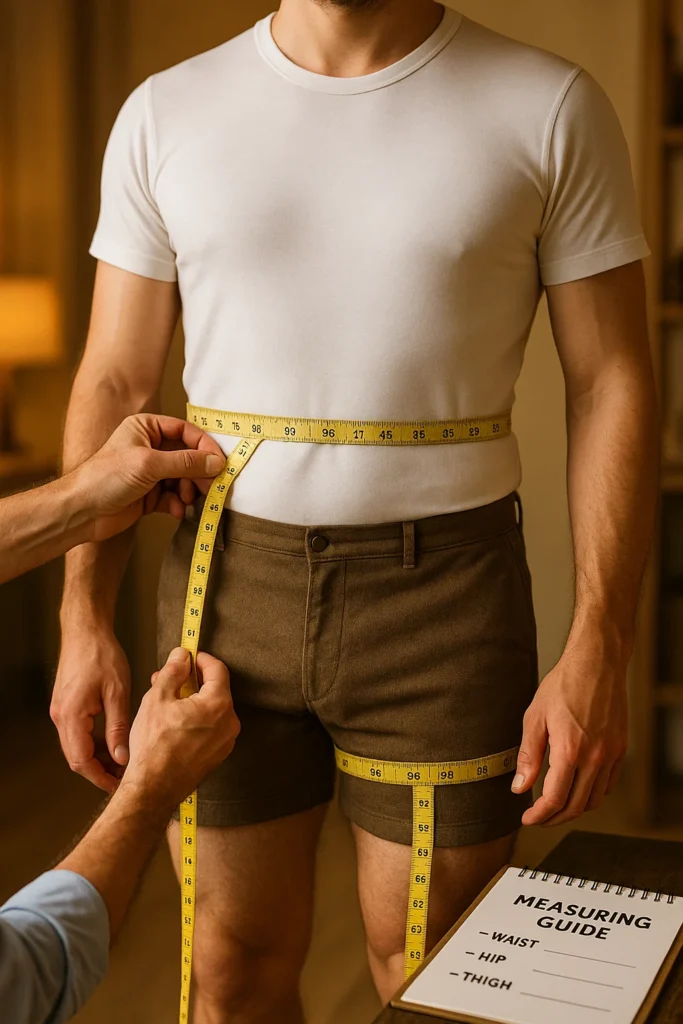
How to Wash Lederhosen?
Tools You’ll Need Before Measuring
Before you begin, it’s important to gather the right tools and set yourself up in a comfortable, distraction-free environment. These essentials will help ensure your numbers are correct the first time, reducing any chance of sizing errors or return hassles.
Use a Soft Measuring Tape for Precision
The most crucial tool for this task is a soft, flexible measuring tape—the type used in tailoring or sewing. Unlike metal tapes, which can’t wrap smoothly around the body, a soft tape conforms to your shape and allows for more accurate reading. Make sure the tape has clear, easy-to-read centimeter markings, as Lederhosen sizes are often listed in European units.
Wear Light, Close-Fitting Clothing
To avoid extra bulk affecting your measurements, wear form-fitting underwear or lightweight pants during the process. Thick garments can add centimeters without you realizing, leading to a poor fit—especially in snug areas like the waist or thigh. Think of this step as prepping your body the same way you’d dress when trying something on in a store.
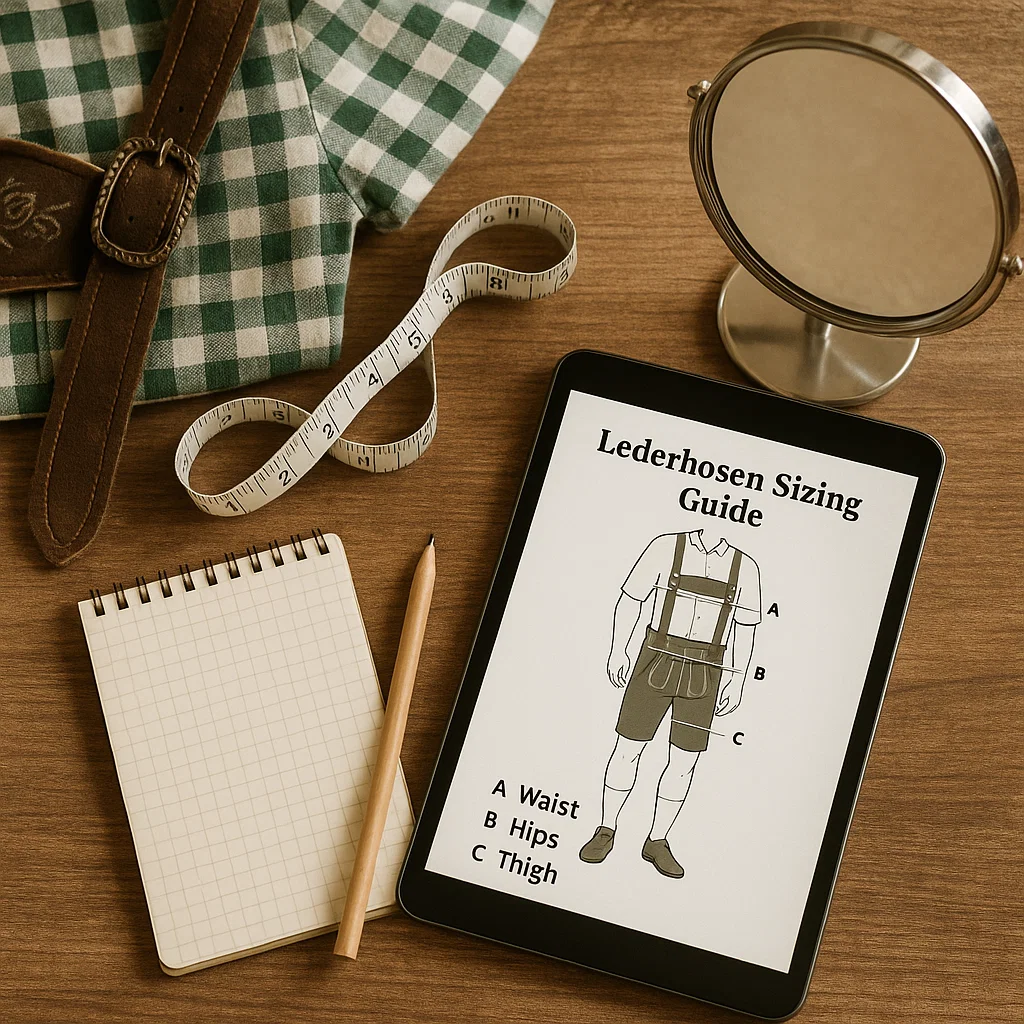
What to Wear with Lederhosen?
Record Each Measurement Immediately
Have a notepad or digital note open on your phone to jot down your measurements right after you take them. Even a small mix-up in numbers can throw off the entire fit. Organize your notes clearly by labeling each body area so you can compare them later with sizing charts or product descriptions.
Ask a Friend for Help If Possible
While some areas like the waist or thigh can be self-measured, other zones such as the hips or inseam are much more accurate when someone assists. A second person ensures the tape stays level and snug—not twisted or slack—especially when measuring behind your back or lower limbs.
How to Measure Your Waist for Lederhosen
Getting the waist measurement right is one of the most important steps in choosing a pair of well-fitted Lederhosen. Unlike modern jeans, which sit low on the hips, traditional Lederhosen are designed to sit higher, often just above the natural waist. Measuring the correct area ensures comfort, support, and an authentic Bavarian silhouette.
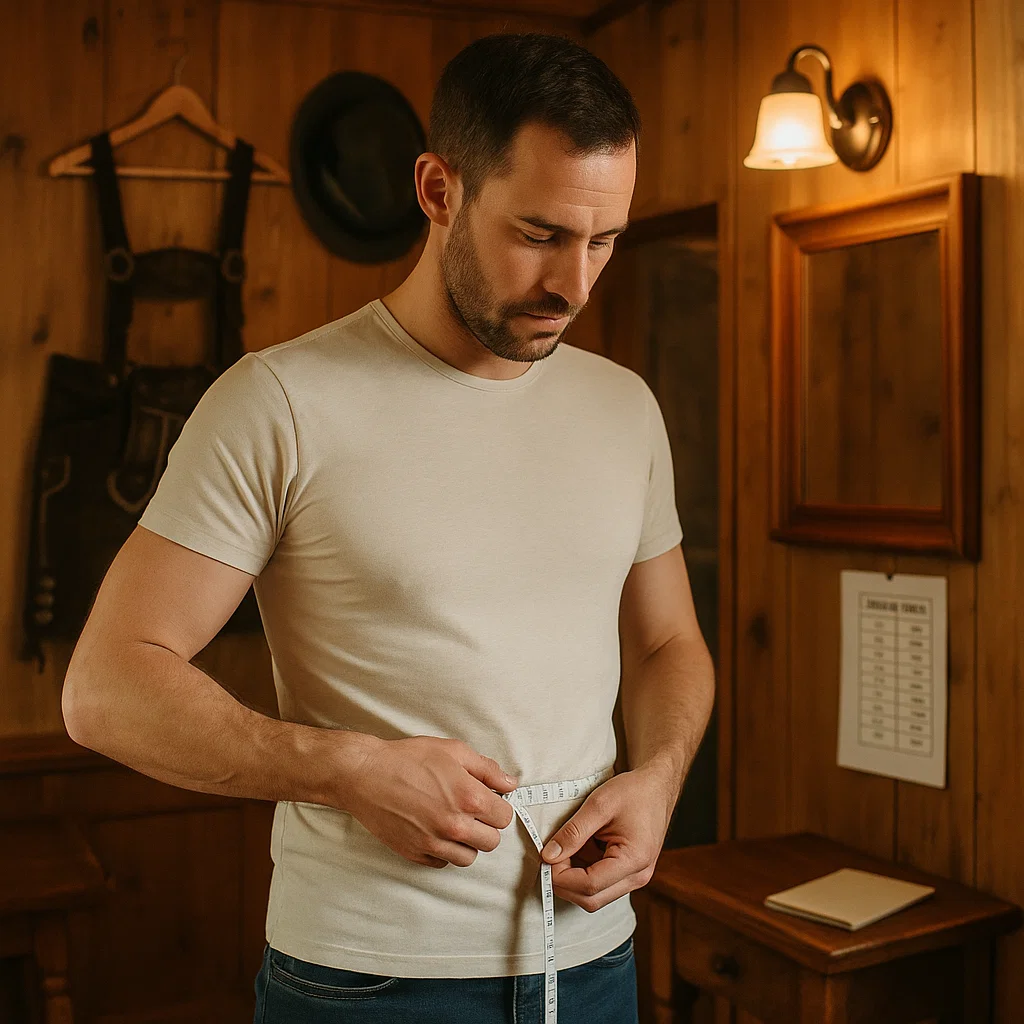
Find the Natural Waistline
To begin, locate your natural waist—this is usually the narrowest part of your torso, just above the belly button and below the ribcage. Avoid measuring where your jeans typically sit, as this will result in a loose fit and compromise the intended design of the Lederhosen.
Wrap the Tape Correctly
Using your soft measuring tape, wrap it around your waist, keeping it snug but not tight. It should lay flat against your skin or thin clothing without pinching. Stand naturally—don’t suck in your stomach or slouch—as your posture can affect the accuracy of the number.
Note the High-Waist Fit
Remember, Lederhosen are tailored to sit high and stay in place with or without suspenders. This elevated fit adds to their traditional character and helps support the entire structure of the garment, especially if you’re pairing them with a decorative belt or braces.
Why This Measurement Matters
A properly measured waist ensures the Lederhosen hug the body comfortably while allowing room for movement. If the waist is too tight, the leather can feel restrictive and may not stretch easily. Too loose, and you’ll deal with sagging or shifting during wear—especially at festivals or long events.
Measuring Your Hips and Seat for a Comfortable Fit
For a comfortable and flattering fit, it’s essential to measure around your hips and seat accurately. To do this, wrap the tape around the widest part of your hips and buttocks, ensuring the tape is level and snug but not tight. This ensures that the Lederhosen will fit comfortably without restricting your movements, whether you’re walking, sitting, or dancing. Unlike the waist, which is located above the hips, the seat measurement refers to the fullest part of your hips and rear. A properly measured seat ensures the Lederhosen sit smoothly, without tightness or bunching. This is particularly important for styles like Bundhosen, which offer more room at the hips, while knee-length Lederhosen should fit more closely. A well-measured seat allows the leather to conform to your shape comfortably over time, making sure the fit is both practical and flattering.
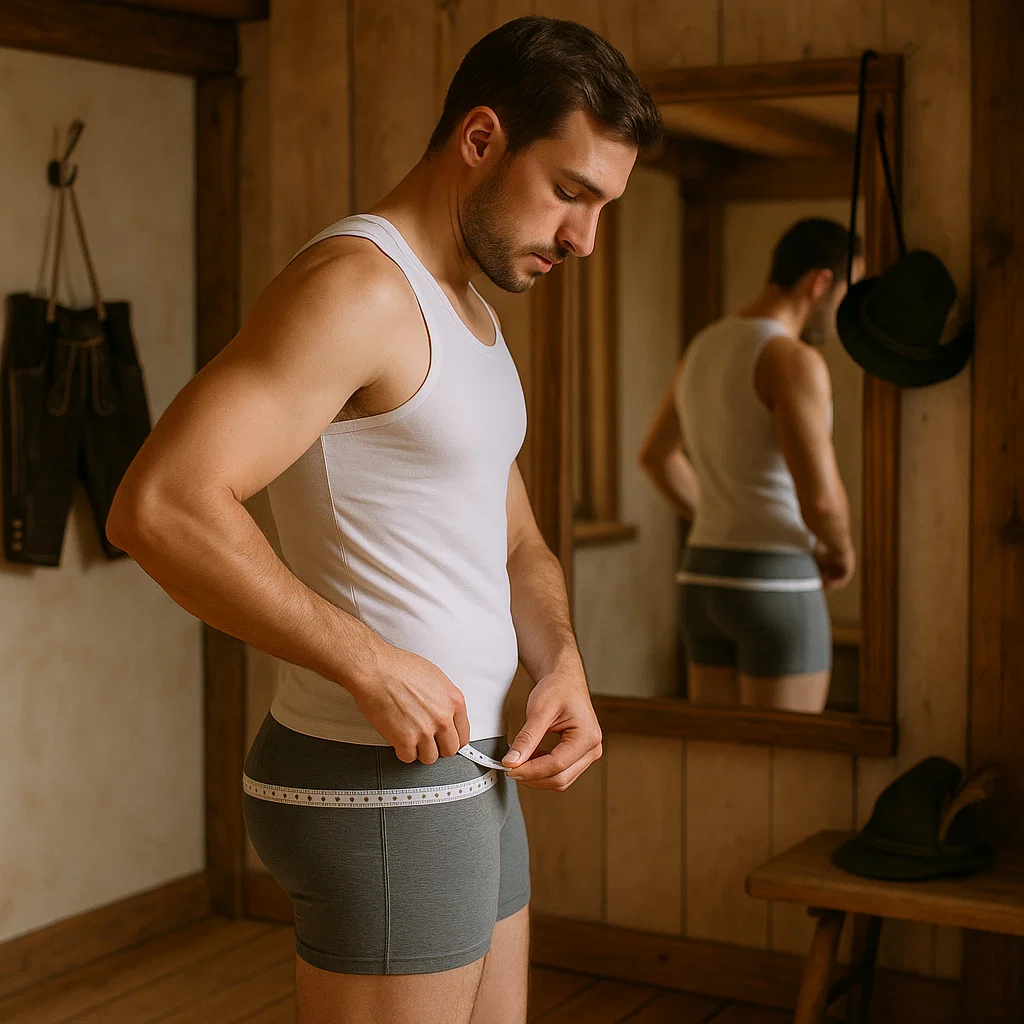
Thigh and Leg Measurements for a Tailored Look
To achieve a truly tailored look with your Lederhosen, taking accurate thigh and leg measurements is key. Begin by measuring around the thickest part of your thigh, typically a few inches below the hip. Keep the measuring tape comfortably snug but not tight—this will help your Lederhosen fit smoothly without feeling restrictive. This measurement is especially important for knee-length styles that hug the upper leg or for Bundhosen, which tend to offer more room in the thigh area. Don’t forget to measure your calf circumference as well, especially if your Lederhosen style includes ties or button closures below the knee. A good calf measurement ensures that closures won’t dig in or feel loose. Together, these leg measurements help define the silhouette of your Lederhosen, whether you’re aiming for a classic Alpine fit or a sleek modern cut.
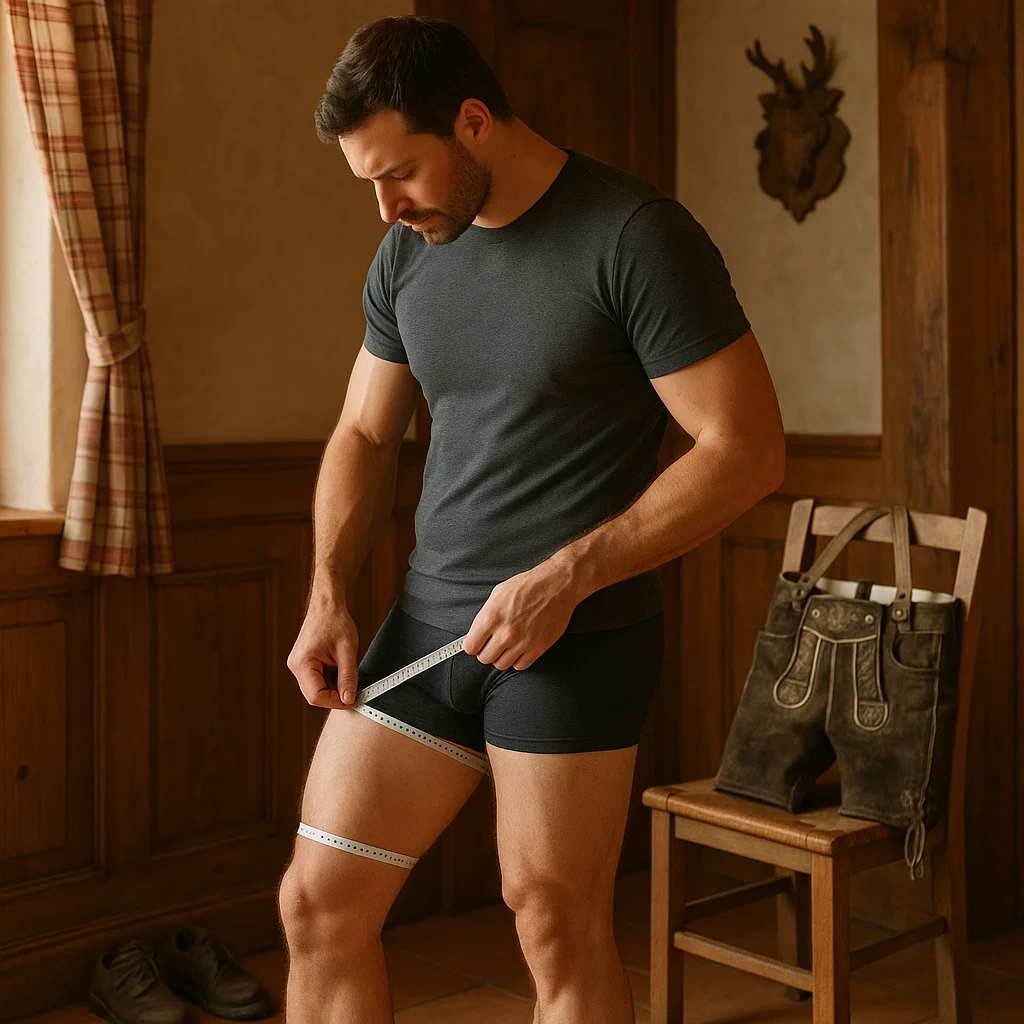
Inseam and Outseam: Finding the Right Length
Getting the correct length is essential when selecting traditional or modern Lederhosen. To measure the inseam, place the measuring tape at the crotch and extend it down to just above your knee—this length suits most knee-length Lederhosen. For Bundhosen or other longer styles, you’ll also need the outseam, which starts at your Lederhosen waistline (usually higher than your jeans) and runs down to where you’d like the pants to end. Keep in mind that modern versions often favor shorter lengths for a sleeker look, while longer options give off a more rustic, traditional vibe. Accurate inseam and outseam measurements ensure the Lederhosen’s legs neither ride up nor drag too low, preserving their authentic Alpine silhouette.
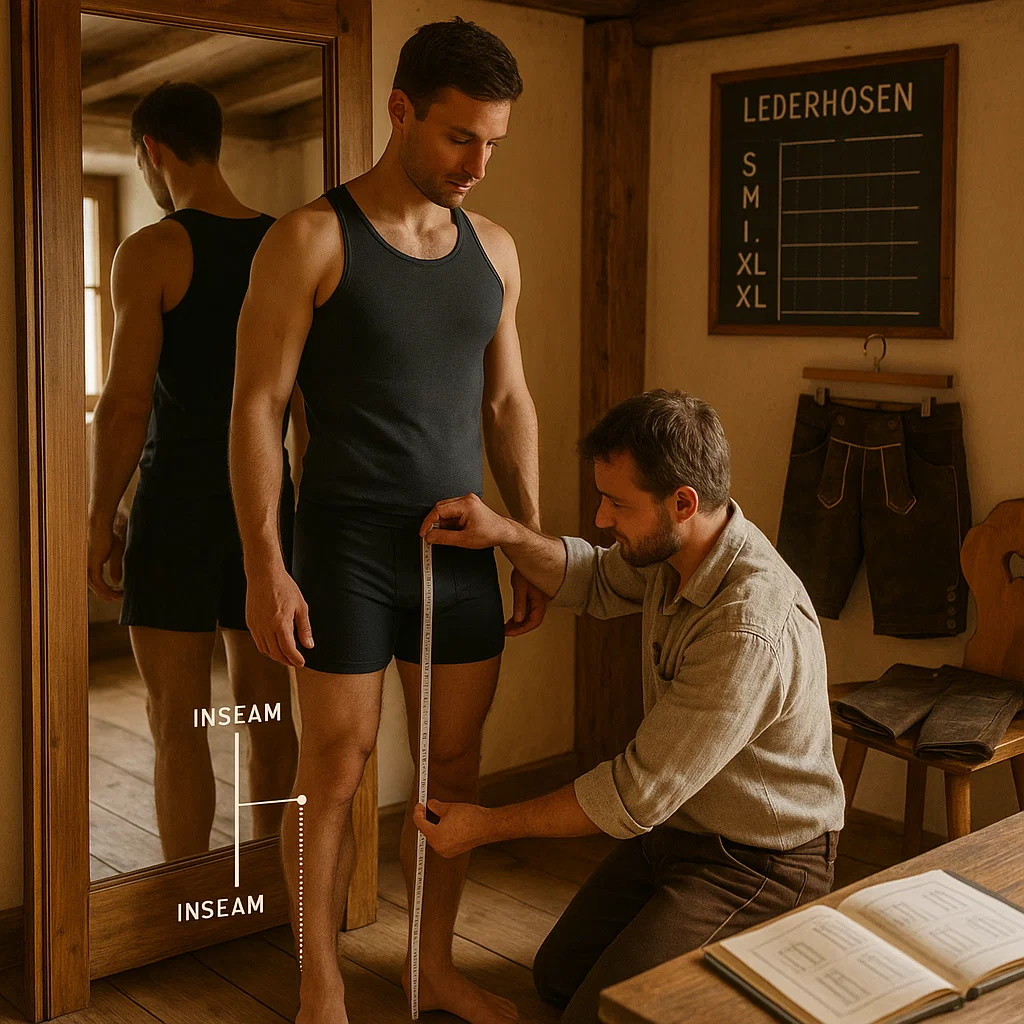
What Size Lederhosen Should You Buy?
Lederhosen sizing typically follows the European measurement system, where sizes are listed in centimeters rather than inches. To convert your measurements into the correct size, match your waist, hip, and thigh data with a reliable Lederhosen Size Chart. Always measure in centimeters for the most accurate result. Since leather naturally softens and may give slightly with wear, it’s best to opt for a fit that feels snug at first. Avoid buying larger sizes in hopes of comfort—properly fitted leather molds to your body over time, providing better movement and appearance. Following these sizing guidelines minimizes guesswork and increases your chances of getting that perfect alpine fit on the first try.
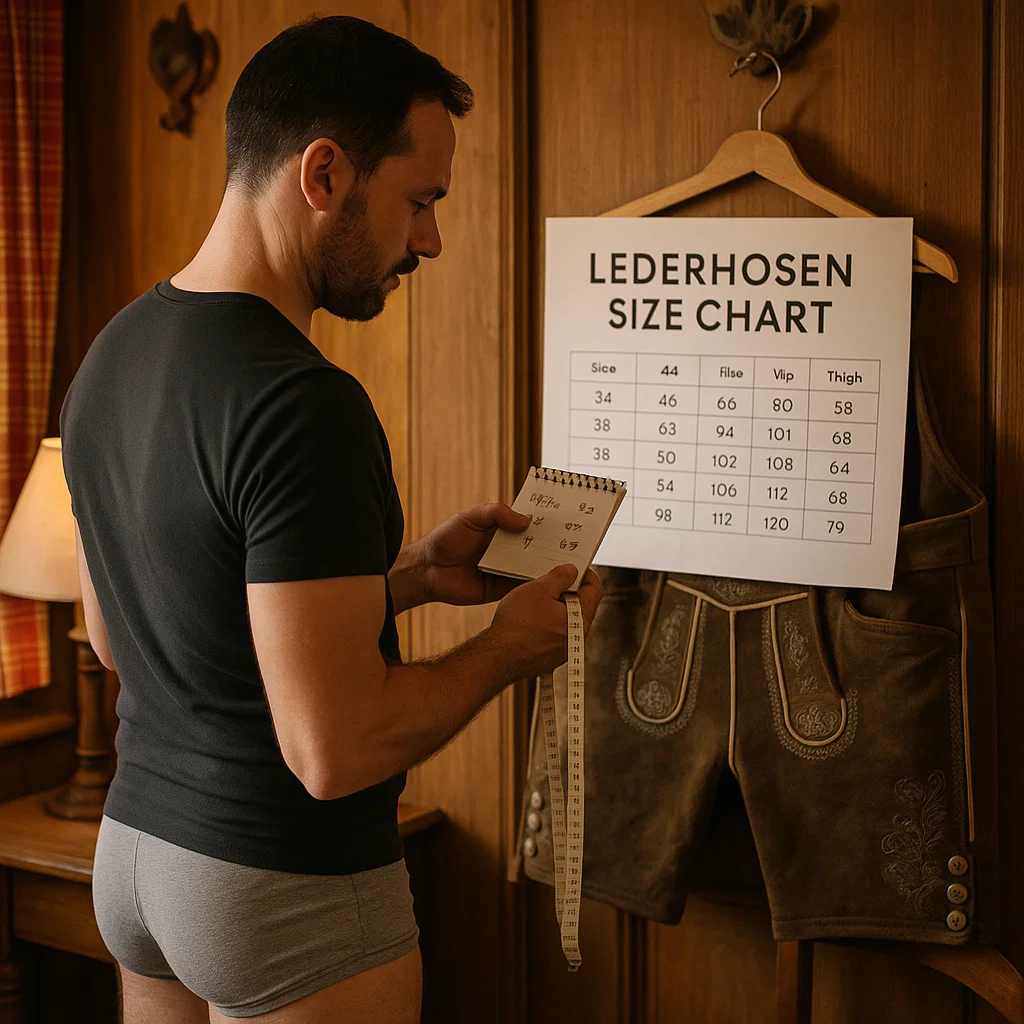
Tailored vs. Off-the-Rack: Which Should You Choose?
Choosing between tailored Lederhosen and off-the-rack options depends on your body type, budget, and fit preferences. Tailored pieces are ideal if you fall between sizes, have an athletic or non-standard build, or want a personalized fit with specific detailing. Though they cost more, custom Lederhosen provide unmatched comfort and alignment with your measurements. On the other hand, many ready-made options today offer a surprisingly good fit—especially if you’ve measured correctly and follow the brand’s sizing guide. Some retailers also offer minor alteration services, which help bridge the gap between mass production and custom fitting. Whether tailored or not, accurate measurements ensure either option looks intentional and refined.
Try It On: Final Fit Check Tips
Once your Lederhosen arrive, trying them on is more than just a formality—it’s your final fit test. First, fasten the buttons or laces and ensure the waist fits snugly without gaping or digging in. Check that the seat lies flat, with no sagging or tightness around the buttocks. Walk, sit, and crouch to test movement; a well-fitted pair should feel secure yet flexible. Adjust suspenders to balance the rise and prevent pulling. If they feel slightly tight at first, don’t worry—real leather will soften with wear. However, if there’s discomfort or restriction in movement, a different size or cut may be necessary. Use this try-on session to confirm that every part of your Lederhosen moves with you, not against you.

Anna Bauer is a seasoned Bavarian fashion expert, cultural consultant, and heritage stylist with over a decade of hands-on experience in traditional German clothing. Born in Munich, the heart of Bavaria, Anna grew up surrounded by the rich traditions of Trachten fashion. Her passion for cultural attire led her to pursue a degree in Fashion and Textile Design at the prestigious University of the Arts Berlin, where she specialized in European folkwear.
Over the past 12+ years, Anna has collaborated with renowned Trachten designers, styled outfits for Oktoberfest events across Germany, and contributed articles to top fashion and culture magazines across Europe. Her work focuses on preserving the authenticity of Lederhosen and Dirndl wear while helping modern audiences style them with confidence and flair.
As the lead content contributor for German Attire, Anna combines her academic background, professional styling experience, and deep cultural roots to provide readers with valuable insights into traditional German fashion. Her blog posts cover everything from historical origins and styling guides to care tips and festival outfit planning—making her a trusted voice for anyone looking to embrace Bavarian heritage in a stylish, modern way.
